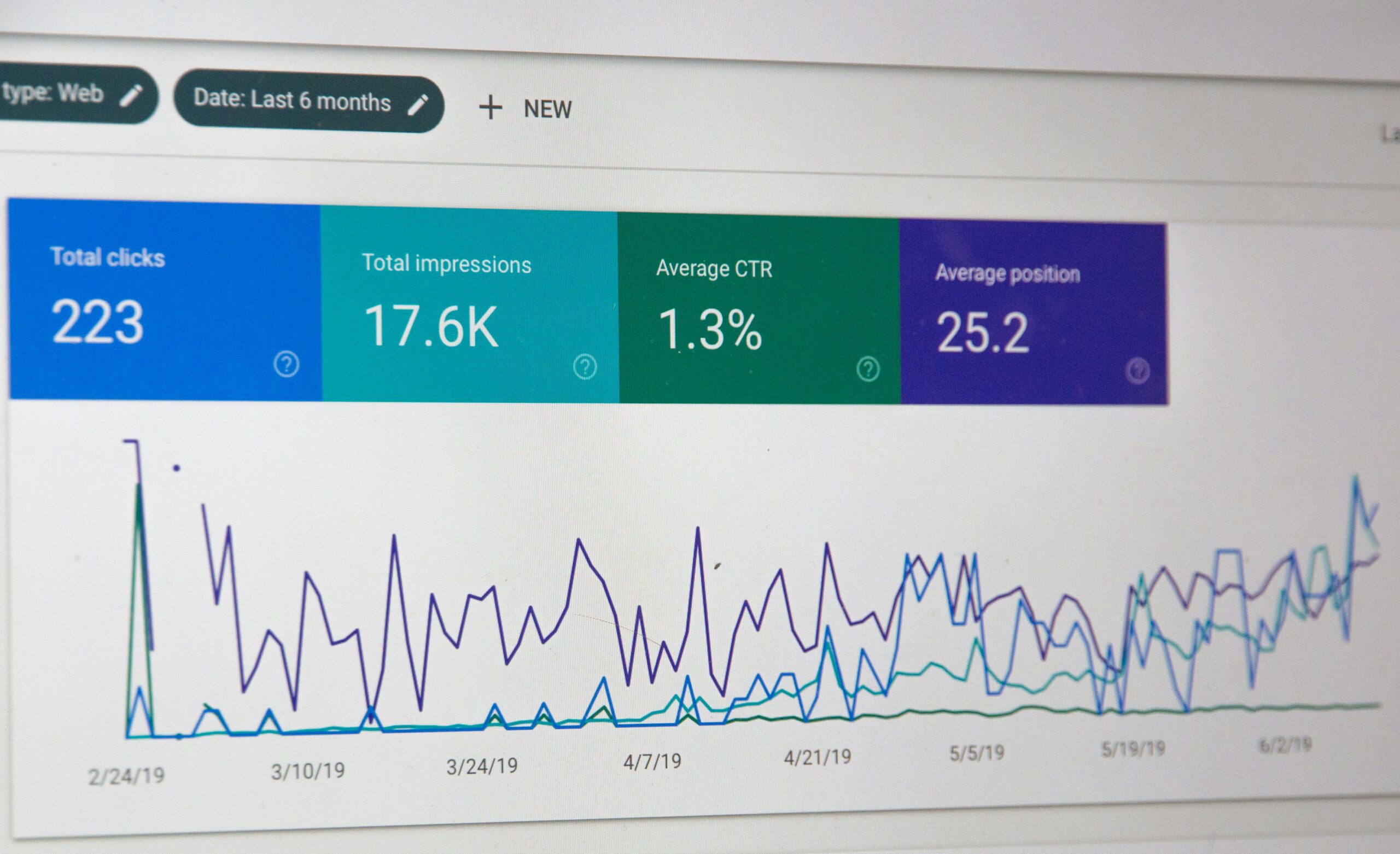The importance of User Experience is…
Categoria: Uncategorized
-

Increasing revenue 101: strategies for late 2025
As we approach the end of 2025, businesses are looking for effective ways to boost their revenue. In this blog post, we’ll explore essential strategies that can help you increase your revenue and achieve your financial goals.
1. Understand Your Market
Before diving into revenue-boosting tactics, it’s crucial to understand your target market. Conduct thorough market research to identify customer needs, preferences, and buying behaviors. This knowledge will enable you to tailor your offerings effectively.
2. Optimize Pricing Strategies
Pricing can make or break your sales. Consider implementing dynamic pricing strategies that reflect market demand and customer willingness to pay. Don’t hesitate to test different price points to find what works best for your audience.
3. Enhance Customer Experience
Providing an exceptional customer experience can lead to increased loyalty and repeat business. Focus on improving customer service, streamlining processes, and ensuring your product or service meets high standards.
4. Leverage Digital Marketing
In today’s digital age, effective online marketing is essential. Utilize social media, SEO (Search Engine Optimization), and email marketing to reach a wider audience. Engage with potential customers through valuable content and targeted ads.
5. Explore New Revenue Streams
Diversifying your revenue streams can help mitigate risks and increase overall income. Consider introducing new products, services, or subscription models that align with your brand and customer needs.
6. Invest in Technology
Technology can streamline operations and improve efficiency. Invest in tools that automate processes, enhance data analytics, and provide better insights into your business performance.
Conclusion
Increasing revenue in late 2025 requires a strategic approach. By understanding your market, optimizing pricing, enhancing customer experience, leveraging your online presence, exploring new revenue streams, and investing in technology, you can position your business for success. Start implementing these strategies today to see significant growth in your revenue!
-

The Ultimate Guide to SEO in 2025: Dominate your industry and drive business growth
In today’s digital landscape, a website is no longer just a brochure; it’s a storefront, a sales channel, and a 24/7 marketing engine. But even the most beautifully designed website will struggle to attract customers if it’s buried on page 10 of search results. This is where Search Engine Optimization (SEO) steps in. It’s not just a technical process; it’s a strategic investment that can significantly boost your business’s visibility, drive organic traffic, and ultimately, increase revenue.
This post dives deep into the world of SEO, explaining what it is, why it’s crucial for every business, and how you can implement effective strategies to maximize your online presence.
What is SEO?

Search Engine Optimization (SEO) is the practice of increasing the quantity and quality of traffic to your website through organic search engine results. Instead of paying for ads (like with Pay-Per-Click or PPC advertising), SEO focuses on earning a higher ranking in unpaid, or “organic,” search results. When someone searches for a product or service related to your business on Google, Bing, or another search engine, your goal is to appear prominently on the first page – ideally, at the very top.
This isn’t about manipulating search engines; it’s about creating a website and content that provides genuine value to users and aligns with search engine algorithms. Search engines prioritize websites that offer a positive user experience, relevant information, and high-quality content. Therefore, effective SEO is less about “gaming the system” and more about providing a superior user experience.
Why is SEO Important for Every Business?
Regardless of your industry, size, or budget, SEO offers immense benefits:
-
Increased Brand Visibility: Higher rankings translate to more exposure. People trust search engines, and appearing prominently in search results builds credibility and strengthens your brand reputation. This is particularly important for startups and smaller businesses competing against larger corporations.
-
Targeted Traffic: Unlike other marketing methods, SEO attracts users actively searching for products or services you offer. This targeted traffic is highly qualified, meaning they are already interested in what you provide, significantly increasing your chances of conversion.
-
Cost-Effective Marketing: While SEO requires an initial investment in time and resources, it’s significantly more cost-effective in the long run than paid advertising. Once you’ve achieved high rankings, you’ll continue to receive organic traffic without ongoing ad spend.
-
Long-Term Growth: SEO is a long-term strategy that yields sustained results. Unlike fleeting social media trends or short-term ad campaigns, a well-executed SEO strategy can provide consistent growth over time.
-
Improved User Experience: SEO encourages you to create a user-friendly website with high-quality content. This not only helps your rankings but also improves user satisfaction, fostering loyalty and positive word-of-mouth referrals.
-
Competitive Advantage: In a crowded marketplace, strong SEO allows you to stand out from the competition. By ranking higher than your competitors, you capture a larger share of the potential customer base.
-
Measurable Results: SEO’s effectiveness can be tracked and measured through various analytics tools, allowing you to monitor your progress, adapt your strategy, and optimize your ROI.
Key Elements of a Successful SEO Strategy:
A robust SEO strategy incorporates multiple elements, working synergistically to improve your website’s visibility.
-
Keyword Research: This is the cornerstone of Search Engine Optimization. It involves identifying the specific words and phrases (keywords) your target audience uses when searching for products or services like yours. Tools like Google Keyword Planner, Ahrefs, SEMrush, and Moz Keyword Explorer help you find relevant keywords with high search volume and low competition.
-
On-Page Optimization: This refers to optimizing elements within your website to improve its ranking for target keywords. Key aspects include:
-
Title Tags and Meta Descriptions: These are crucial for attracting clicks from search results. Craft compelling and keyword-rich titles and descriptions that accurately reflect your page’s content.
-
Header Tags (H1-H6): These structure your content logically and help search engines understand the hierarchy of information. Use relevant keywords in your header tags.
-
Image Optimization: Optimize images with descriptive file names, alt text, and compressed file sizes to improve page load speed and accessibility.
-
URL Structure: Create clear, concise, and keyword-rich URLs to improve readability and searchability.
-
Content Optimization: Create high-quality, engaging, and informative content that addresses your target audience’s needs and incorporates relevant keywords naturally. Avoid keyword stuffing, which is detrimental to your rankings.
-
Off-Page Optimization: This involves activities outside your website that build your website’s authority and credibility in the eyes of search engines. Key components include:
-
Link Building: Earning high-quality backlinks from reputable websites is crucial. These backlinks act as “votes” of confidence, signaling to search engines that your website is a trusted source of information. Focus on building natural backlinks through content marketing, guest posting, and outreach.
-
Social Media Marketing: While not a direct ranking factor, social media can indirectly boost your SEO efforts. Increased brand visibility and engagement on social media can drive traffic to your website and improve your overall online presence.
-
Local SEO (for local businesses): Optimize your Google My Business profile, ensure consistent NAP (Name, Address, Phone number) information across all online listings, and encourage customer reviews to improve local search rankings.
-
Technical SEO: This involves optimizing your website’s technical aspects to ensure search engines can easily crawl, index, and understand your content. Key aspects include:
-
Website Speed: Fast loading times are crucial for both user experience and search engine rankings. Optimize images, use a content delivery network (CDN), and ensure your website is well-coded.
-
Mobile Friendliness: Ensure your website is responsive and adapts seamlessly to different screen sizes. Google prioritizes mobile-friendly websites.
-
Site Architecture: Create a clear and logical website structure that allows search engines to easily navigate and index your pages.
-
XML Sitemap: Submit an XML sitemap to search engines to help them discover and index all your website pages.
-
Robots.txt: Use a robots.txt file to control which parts of your website search engines can access.
-
Content Marketing: Creating high-quality, valuable content is arguably the most crucial aspect of SEO. Content marketing involves producing various forms of content – blog posts, articles, videos, infographics, and more – to attract and engage your target audience. This content should be informative, engaging, and naturally incorporate relevant keywords.
-
SEO Tools and Analytics: Utilizing various SEO tools and analytics platforms is crucial for monitoring your progress, identifying areas for improvement, and making data-driven decisions. Popular tools include:
-
Google Search Console: Provides data on how Google sees your website, including crawl errors, indexation issues, and keyword performance.
-
Google Analytics: Tracks website traffic, user behavior, and other key metrics to measure the effectiveness of your SEO efforts.
-
SEMrush, Ahrefs, Moz: Offer a suite of tools for keyword research, competitor analysis, backlink analysis, and more.
Staying Ahead of the Curve:
The world of SEO is constantly evolving. Search engine algorithms are regularly updated, meaning strategies that work today might not work tomorrow. To stay ahead of the curve:
-
Keep Learning: Stay updated on the latest SEO trends, algorithm updates, and best practices through blogs, industry publications, and conferences.
-
Monitor Your Results: Regularly analyze your website’s performance using analytics tools and adjust your strategy accordingly.
-
Embrace New Technologies: Explore new SEO tools and techniques, such as voice search optimization and AI-powered content creation.
-
Adapt and Iterate: SEO is an iterative process. Continuously test, analyze, and refine your strategies to achieve optimal results.
Conclusion
SEO is not a magic bullet; it’s a long-term investment that requires consistent effort and strategic planning. However, the rewards are substantial. By implementing a comprehensive SEO strategy, your business can achieve increased brand visibility, attract highly qualified traffic, build credibility, and ultimately drive significant growth. Don’t underestimate the power of SEO – it’s the key to unlocking your website’s full potential and achieving sustainable online success. Remember to prioritize providing value to your users – the ultimate goal is to create a positive experience that keeps them coming back for more. This user-centric approach, coupled with a strategic understanding of SEO best practices, will lay the foundation for a thriving online presence and enduring business success.
-

